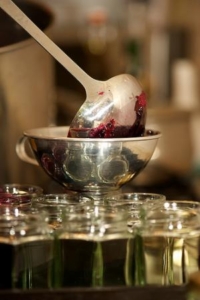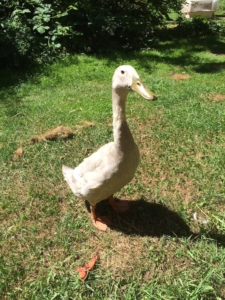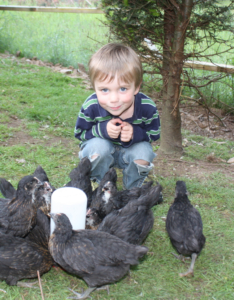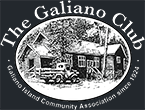The funky offspring of the Galiano Club, the Food Program began in 2008.
The Galiano Community Food Program strives to ensure that Galiano Island is a thriving, livable, food-secure community, where every resident feels included, welcome and empowered to build a deeper connection with their food system. In so doing, the Program improves Galiano’s ecological sustainability and community resilience in the face of climate change and uncertainty. The program seeks to set an example that reaches beyond our local community and spreads across the country.
Food Program Blog
Monday Aug 17th 5-9pm – Jam for Beginners
 Galiano summers yield an amazing variety of tree fruits and berries, available from our farmers, through our Gleaning program and in your own backyard. Making jam is a great way to capture the taste of summer in a jar to brighten up those dark winter days.
Galiano summers yield an amazing variety of tree fruits and berries, available from our farmers, through our Gleaning program and in your own backyard. Making jam is a great way to capture the taste of summer in a jar to brighten up those dark winter days.
Making jam can be daunting if you’ve never tried it. But there are different methods, and some are very easy. In this class we will be using commercial pectin and the only skills needed are the ability to measure a few cups of fruit, and the ability to time a boil—skills everyone has. That’s it. No thermometers, no wrinkle tests. Using some commercial pectins also gives you the freedom to use honey or skip the sugar all together—things not possible with traditional long boil jams.
Class costs $15 sliding scale. Register at galianofoodprograms@gmail.com
Supper’s Ready – Community Games Night – Thursday August 20th from 6-8pm
 Come join us at the South Hall for a raucous evening of games with your friends and neighbours!
Come join us at the South Hall for a raucous evening of games with your friends and neighbours!
Bring your favourite board game to share with others. (No e-games please.) There will be Scrabble, Apples to Apples, Cards, Catan, Chess, Game of Life, Othello, Trivia, Crib and more…
We will have snacks and a simple supper. Everyone is welcome!
The price is right!
Sliding scale $5-$10. Volunteers needed.
This project is funded by the Government of Canada’s New Horizons federal government, through New Horizons for Seniors Program.
Cheese Club – Thursday July 9th at 6pm
 We are going to be making Camembert and Dream Cheese in oil.
We are going to be making Camembert and Dream Cheese in oil.
Check out both recipes on David’s web site: http://thewayofcheese.com/2013/02/14/camembert/
You must RSVP if you want to come. I must limit the class size.
Class is $15-$20 sliding scale.
Consider Ducks! by Emma Luna Davis
 Last month, Colleen painted a bucolic picture of life with chickens that had me seriously considering adding a few to my backyard barnyard. Then I remembered why I have ducks.
Last month, Colleen painted a bucolic picture of life with chickens that had me seriously considering adding a few to my backyard barnyard. Then I remembered why I have ducks.
For me, the absolute number one selling feature of ducks is that they adore slugs and snails. Now, when I find a slug in my garden (which is rarer all the time), instead of swearing under my breath, I call my ducks, and watch them flap over to enjoy their favourite treat. My Muscovies also eat mosquitoes and wasps out of the air. They are fantastic garden companions—I wouldn’t let them in when I have young lettuces or strawberries but at the right time they do a very efficient job of cleaning up. They eat almost any pest, and don’t scratch, so they generally don’t disturb garden plants, and are actually quite gentle. One result of their voracious appetite for garden pests is that they forage a fair portion of their diets, which keeps down the feed bill. And unlike chickens, their manure doesn’t need to ‘rest’ before you apply it to the garden.
While duck eggs may not be to everyone’s taste, to me they’re just more of the best parts of an egg. They’re bigger and richer than chicken eggs, with a higher proportion of yolk per egg. Ounce per ounce, they have twice as much […]
Seedy Saturday Gleaning Project Presentation Notes
 In February, Program Coordinator Emma Luna Davis gave a presentation at Salt Spring Island’s Seedy Saturday about the Galiano Community Food Program’s Gleaning Project. Here are the notes from that presentation.
In February, Program Coordinator Emma Luna Davis gave a presentation at Salt Spring Island’s Seedy Saturday about the Galiano Community Food Program’s Gleaning Project. Here are the notes from that presentation.
Galiano Island Community Food Program Gleaning Project
Started in 2009, with support from the YMCA and the federal government.
WHY
Galiano has many productive gardens and hundreds of fruit trees, many of which are heritage varieties that aren’t commercially available. And while many of our landowners do make amazing use of what they produce, there is waste. Sometimes it is because the landowners may have gotten older and find climbing a ladder difficult. In other cases, the property is owned by weekenders and it can be challenging for them to make use of everything when they are only onsite for a short time, and the window of time when things are ready for picking is not very big. Sometimes, we just have a bumper season, and all of a sudden people find themselves with more than they can use. At the same time, we have many low-income households without great access to fresh produce, which can be very expensive to bring in from off-island.
We wanted to find a way to get this excess into the hands of people who need and want it, and cut down on food waste. This would be a way to reduce our dependency on […]
Chickens on the Homestead by Colleen Doty
 In grade five I won a public-speaking contest but the head teacher didn’t care for the topic I chose: chickens. “They were too,” she paused, curled her lip and shuddered as if she had just found a slug in her shoe, “chickeny.” I found her response amusing, for I had assumed that everyone would be fascinated by chickens. Wouldn’t anyone, given the opportunity, become completely absorbed by their clucks and coos, sleep-time murmurs, broody shrieks, curious personalities, and the dynamics of the pecking order? Because I’m the same person I was three decades ago, allow me to gush about chickens, why I adore them, and why I think they help round out a homestead. They are an essential part of the process of gaining more control over one’s food production.
In grade five I won a public-speaking contest but the head teacher didn’t care for the topic I chose: chickens. “They were too,” she paused, curled her lip and shuddered as if she had just found a slug in her shoe, “chickeny.” I found her response amusing, for I had assumed that everyone would be fascinated by chickens. Wouldn’t anyone, given the opportunity, become completely absorbed by their clucks and coos, sleep-time murmurs, broody shrieks, curious personalities, and the dynamics of the pecking order? Because I’m the same person I was three decades ago, allow me to gush about chickens, why I adore them, and why I think they help round out a homestead. They are an essential part of the process of gaining more control over one’s food production.
The eggs, with those bright orange yolks from happy chickens, are highly satisfying on many levels. The average chicken will lay about 260 eggs a year. Because we have different breeds, the egg shapes, sizes, and tones within our flock differ. With some accuracy, we can identify who laid which egg.
Chicken manure is considered one of the most desirable organic fertilizers. It is very high in nitrogen, phosphorous and potash/potassium. As a result, it is very “hot” and needs to mellow for 6-12 months prior to using or it will burn your plants. An average hen produces […]

